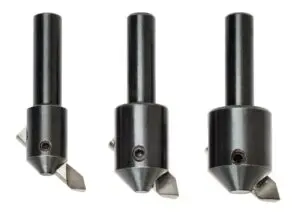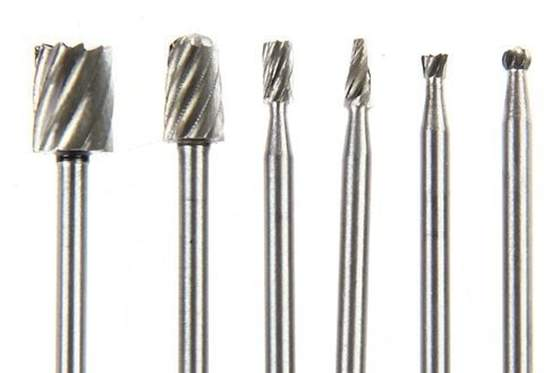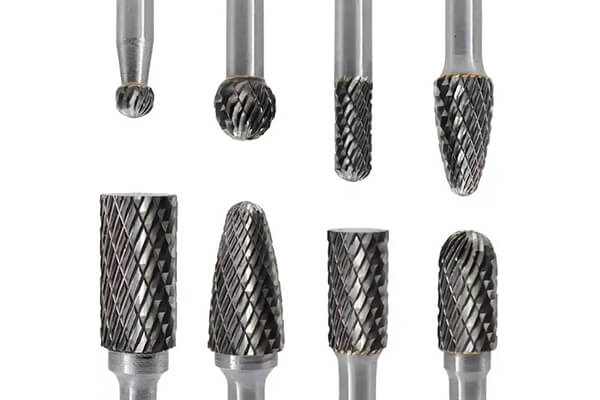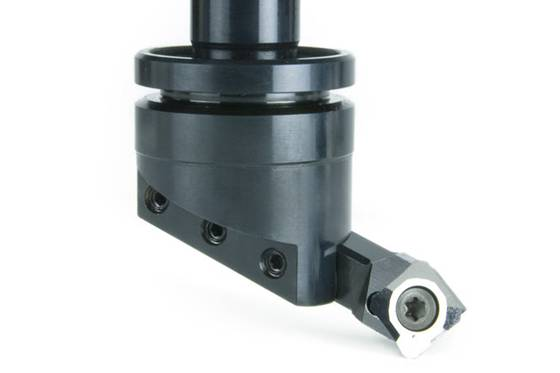
Fly Cutter (Reference)
Introduction
CNC tooling, integral in manufacturing, employs motorized machines and pre-programmed software for automated machining. A crucial player in CNC milling, the fly cutter significantly impacts the finishing of large, flat surfaces. The choice of milling machine and cutter in CNC operations is pivotal for surface quality and machining speed. With a plethora of milling cutters available, understanding the fly cutter is essential. This article explores its definition, types, applications, and the distinction between a fly cutter and a face mill.
What is a fly cutter?
A fly cutter, known for its lateral machining motions, is a rotary cutting tool widely used on CNC milling machines to produce refined plane surfaces. These tools utilize single-point fly cutter bits inserted into a cylindrical body and are mounted in a specialized angled holder for rotation during surfacing cuts on materials like aluminum and steel. The construction includes a body accommodating one or two tool bits, equipped with essential components like a holder, thrust washer, drawbolt, and a left-hand carbide cutting tool. The cylindrical center body typically houses a single tool bit, usually a standard left-hand turning tool set at an angle of 30 to 60 degrees. Alternatively, fly cutters with two tool bits have one at each end, mounted perpendicular to the bar stock's main axis. Power considerations arise, impacting the efficacy of multi-toothed cutters on smaller machines due to increased demands on the machine. Primarily suitable for mild cutting operations, fly cutters find optimal performance in light-duty mills using a single-tooth cutter. Securely placed in a specially angled holder, fly cutters facilitate rotational movement, enabling wide and shallow-facing cuts on both soft and hard materials. While sharing similarities with face mills in being designed for face milling and featuring replaceable cutters, fly cutters distinguish themselves through nuanced differences, playing a crucial role in precision machining applications.
Types of Fly Cutters
Fly cutters, crucial for machining large and flat surfaces, come in diverse types tailored to specific industrial needs. One prominent variant is the Point Cutter, designed for precision in cutting densely populated corals. Available in both long (500 mm) and short (300 mm) sizes, these cutters feature blades with two cutting edges, enabling accurate milling cuts. The needle-like points reach challenging areas, easily retracting into the handle for safe storage.

Single-point fly cutters (References)
Another essential type is the Rotary Cutting Tool, versatile in cutting, drilling, and grinding fabrics swiftly without compromising patterned cutting lines. Skilled experts often use this fly cutter to efficiently process multiple fabric layers—up to eight—in a single milling session, showcasing its speed and precision.

Rotary Cutting Tool (Reference)
Rotary Carving Tools find application in carving operations on hard materials like wood and blown glass. These fly cutters excel in carving against the direction of the grain, adding a dimension of flexibility to machining projects.

Rotary Carving Tool (Reference)
Fly cutters, manufactured to adhere to industrial standards, differ in crucial factors like cutting material, speed, and feed rate. Selecting the appropriate milling cutter based on these considerations is paramount for achieving optimal results when finishing large and flat surfaces. The varied options, from Point Cutters for intricate coral milling to Rotary Cutting Tools for swift fabric processing and Rotary Carving Tools for hard material carving, cater to the diverse needs of machining projects.
Fly Cutter Components and Specifications
Fly cutters, essential tools in milling operations, consist of several key components. The cylindrical body, holder, thrust washer, fasteners, draw bolt, and left-handed carbide cutting tool make up the typical structure. When using fly cutters, understanding their specifications is crucial for optimal performance.

In milling operations, a single tool bit is housed within the centrally positioned cylindrical body of the fly cutter. For those equipped with two tool bits, one is secured on each end. Achieving precise alignment is ensured by placing the fly cutter bits in a specialized angled holder set at a 90-degree angle to the bar stock's main axis. The left-handed carbide tool is strategically angled at 30 to 60 degrees for effective cutting.
Specifications play a vital role in the functionality of fly cutters. The power supplied to each fly cutter bit from the milling machine is paramount. Rotary cutting tools, for instance, feature variable speed motors catering to both light and heavy cutting operations, offering a power range of 0 to 30000rpm.
Matching the length of the fly cutter body with the appropriate tool bit is essential. For example, a 3/4-inch body fly cutter requires a 3/16-inch tool bit, while a 1-1/8-inch body fly cutter pairs with a 1/4-inch tool bit. Similarly, a 1-3/8-inch body fly cutter utilizes a 5/16-inch tool bit for optimal results.
To prevent repetition, it's worth noting that most fly cutters come complete with a holder, fasteners, draw bolt, thrust washer, and a left-handed carbide cutting tool. Additionally, industry-specific designs and manufacturing ensure fly cutters meet various specifications.
Fly Cutter vs. Face Mill: Differences
Fly cutters and face mills play crucial roles in plate surface machining, each offering distinct advantages.
Cutting Position: Fly cutters shine in covering extensive surfaces in a single session, ensuring a remarkably flat outcome. Conversely, face mills, with cutting edges of varying heights, prove more adept at crafting textured or ridged surfaces.
Number of Inserts and Removal Rate: Fly cutters, utilizing one or two inserts at a moderate speed, provide a smooth surface finish. Face mills, armed with multiple inserts at a higher cutting speed, excel in heavy material removal. However, the inability to adjust insert height individually in face mills can lead to variations in chip loads.
Finishing Quality: Face mills stand out for delivering high-quality surface finishes, while fly cutters, employing skim-cut techniques, achieve an even finer finish. For high-volume projects, the efficiency of larger face mills becomes evident due to their faster cutting speeds.
Cost: Face mills demand robust, powerful machines, making them a pricier option. On the flip side, fly cutters, compatible with smaller and less powerful machines, offer a significantly more economical solution. Operating costs rise with the number of inserts, making fly cutters cost-effective with just one or two inserts required.
Operation Requirements and Effect: Fly cutters find utility in lighter machines but come with a lower metal removal rate. Face mills necessitate more power and rigidity but are favored for their capacity to handle deeper cuts, replace inserts without impacting cutter diameter, and maintain tool length offset.
Considerations for Using Fly Cutters
Before diving into surface finishing with fly cutters, it's crucial to consider several factors that can significantly impact the outcome of your machining.
Point Radius: Keep the point radius of your fly cutter tool below 1.5mm for optimal results. A smaller point radius corresponds to a slower feed rate, resulting in a finer finish. Avoid using cutters with large tip radii, as they can increase cutting pressure, leading to issues like squealing, chattering, and subpar finishing.
Type of Workpiece: Tailor your approach based on the material. For steel grades like 1018, opt for carbide bits with zero rake and approximately 5 degrees relief. When working with aluminum, such as 6061-TS, go for high-speed fly cutter bits with a rake angle of around 60 degrees. Machinists often adjust the diameter of standard fly cutters, usually up to 51 mm, making it easier to achieve a 0.25 mm deep cut in aluminum.
Maintenance: Match your fly cutter to the size and power of your mill. For small or light-duty mills, single-toothed fly cutters perform optimally, while multi-toothed milling fly cutters might lack the power and rigidity needed for smaller machines. Ensure your fly cutter bit stays sharp for smooth cuts without excess power. If it becomes dull after extended use, a straightforward grinding process can restore its sharpness.
Applications of Fly Cutters
Fly cutters are versatile cutting tools widely utilized in CNC machining centers and manual mills, requiring no additional arbors. These mechanical tools effectively remove excess material and level workpieces across various materials like metals, wood, and glass. Easy re-sharpening through grinding ensures prolonged use. Adjustable for up to a 2-inch diameter, a standard fly cutter achieves a 0.01-inch deep cut in aluminum. Rotary tools, serving multiple functions like cutting, drilling, grinding, carving, and sanding, offer additional flexibility. Primarily employed in milling machines, fly cutters efficiently machine large, flat surfaces. Their applications extend to machining centers and manual mills, adhering to MACH 151 and MACH 151L performance standards.
Conclusion
In the realm of machining, fly cutters emerge as versatile tools essential for milling large, flat surfaces. Offering flexibility with single or double tool bits, these cutters find their place in various industries. Distinguishing them from face mills, fly cutters boast cost-effectiveness, adaptability to lighter machines, and a knack for delivering even finishes. Machinists navigating this terrain should mind factors like point radius, workpiece specifics, and regular maintenance. From CNC machining centers to manual mills, the fly cutter stands as a reliable companion, efficiently carving through materials and leveling surfaces.




